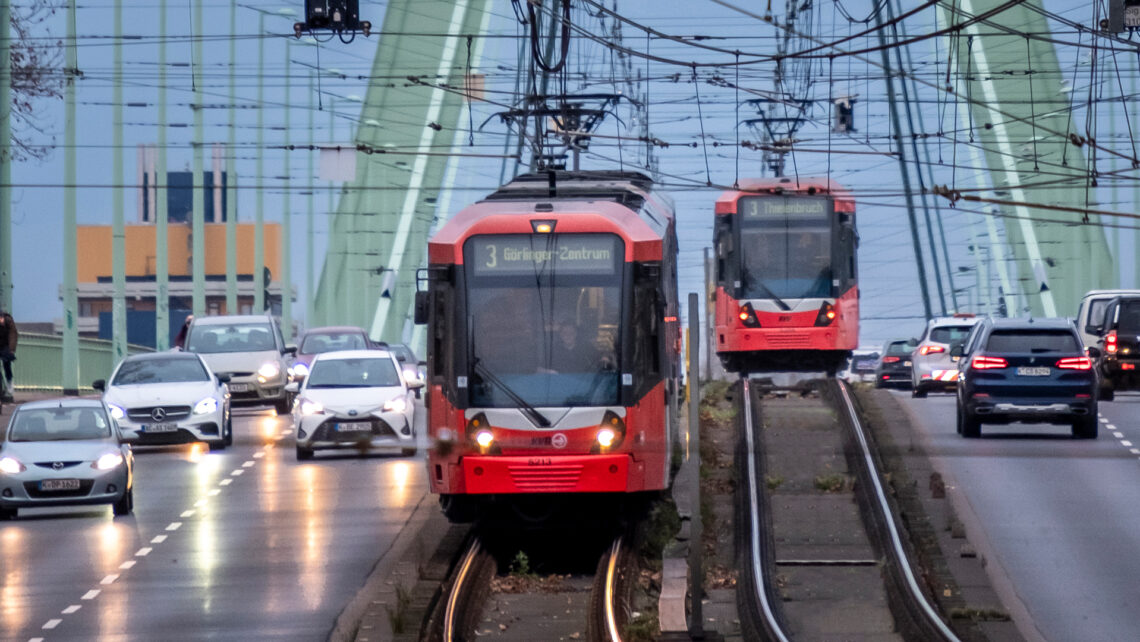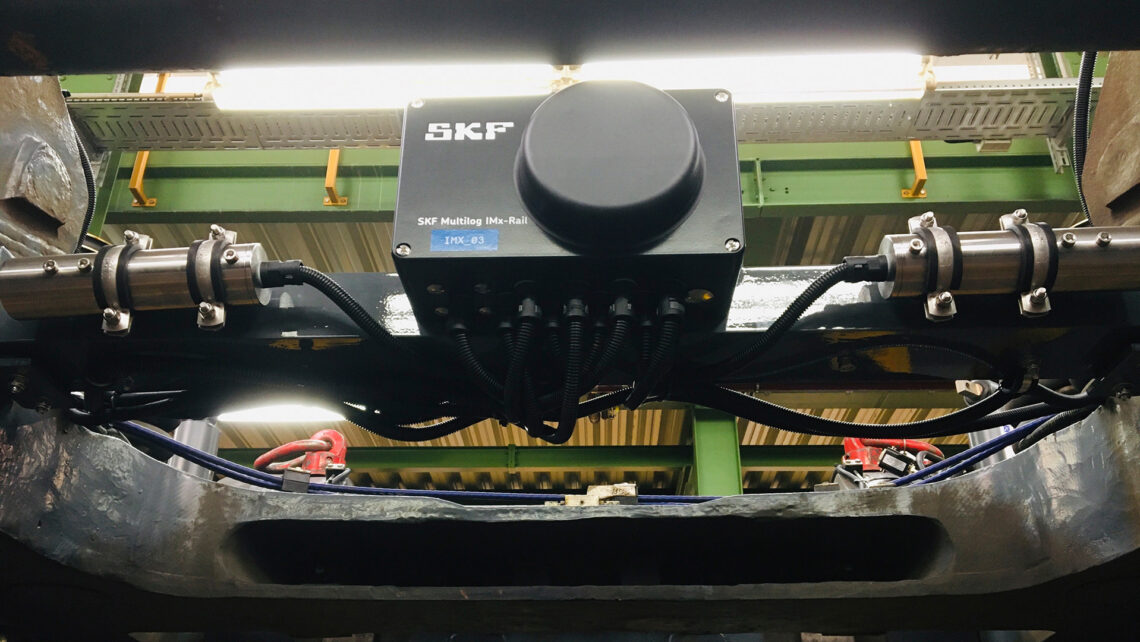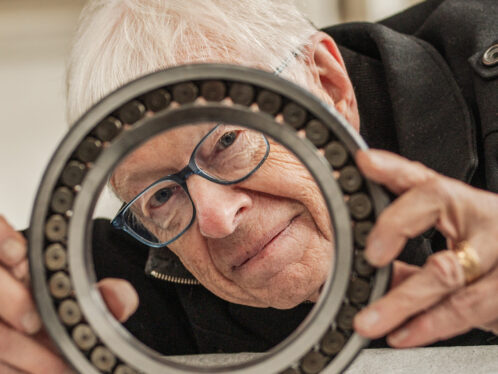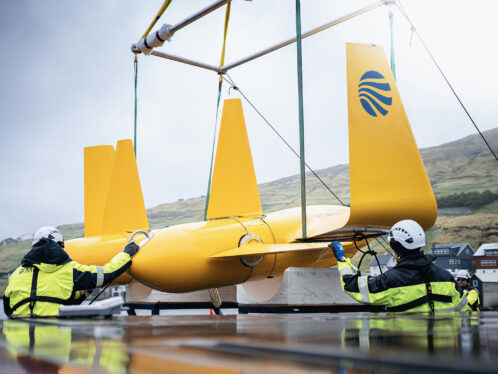
The sounds of the city
Smart sensors and data analytics are helping Europe’s municipal authorities crack down on noise pollution.
Even if you can’t see evidence of people around, you can probably hear it. In a 2019 analysis of almost 1.5 million sound recordings taken at 66 US national parks, researchers found evidence of anthropogenic noise (noise caused or produced by humans) in 37 percent of them. At 77 percent of those locations, the human-made noise was at least twice as loud as the natural background noise in the area, and at more than a third of them it was more than 10 times as loud.
The US is a big, busy country, but those recordings were made in some of its most remote areas. In places where people live, work and play in significant numbers, human noise quickly dominates the aural landscape. This matters because noisy environments can have a negative impact on your health.
The European Environment Agency (EEA) estimates that one in five of the continent’s residents is exposed every day to noise levels that exceed EU recommendations. In many big cities, that fraction rises to more than half, and all that noise is taking its toll on human health. Stress caused by chronic noise exposure is estimated to contribute to 48,000 new cases of heart disease and 12,000 deaths in Europe every year.
The noise detectives
A key element in the battle against harmful noise is tracking down the source. Busy roads and big airports are obvious noise emitters, but in many communities the most disruptive and annoying sources of noise can be intermittent and hard to pin down. One US noise campaigner spent months walking and cycling around his Arizona neighbourhood at night until he finally located the source of the relentless low-frequency hum that kept him awake. It turned out to be the cooling systems of a nearby data centre.
Today, regional authorities, companies and residents are increasingly turning to technology to find and eliminate disruptive noise. In 2022, for example, Paris started to roll out a system of “noise radar” devices. Mounted on lamp posts, these systems use microphones to record especially loud cars and motor scooters. Cameras then use automatic numberplate-recognition technology to identify the offending vehicle, whose owner may be subject to a fine.
Other transport players are using sensors and analytics to help address noises from their own infrastructure and assets. With the right technology and management systems in place, they are finding that keeping on top of unwanted noise can also be the key to more reliable and cost-effective transport systems.
On track for a quieter city
Christian Burk is division manager for track infrastructure at Kölner Verkehrs-Betriebe (KVB), which operates a tram network comprising 199 kilometres of track and 236 stations across Cologne, Germany’s fourth largest city. In the five years since he took on the role, Burk has introduced the latest digital technologies and management to the city’s transport system.
“Noise and vibration on the track are big issues for us,” he says. “Firstly, we operate in a dense inner-city area, so we risk upsetting our neighbours if our vehicles make too much noise. And secondly, if it isn’t fixed quickly, excessive vibration can dramatically reduce the lifetime of the track.”
Noise and vibration on the track are big issues for us.
Christian Burk, division manager for track infrastructure, Kölner Verkehrs-Betriebe (KVB)
Trams powered by electricity are inherently very quiet in operation. The main noise they produce comes from the interactions between a vehicle’s wheels and bumps or irregularities in the track. Spotting such irregularities has traditionally been a manual process. KVB would rely on reports from drivers and from its own maintenance engineers, who would regularly walk the network looking for problems.
The search for a better solution led Burk to a conversation with light rail specialists at SKF. The two companies already knew each other well, since SKF is a long-term supplier of components and equipment to the Cologne network. “I had heard about a track-monitoring system that SKF had deployed in Sweden,” he recalls, “and I was convinced that a similar approach could help us improve the way we work in Cologne.”
After several months of development, KVB has now deployed a monitoring system derived from an SKF solution that has been operating in Gothenburg since 2019. The system uses six trams that have bearings fitted with SKF sensors linked to a data-logging system. As the vehicles travel on their normal routes, accelerometers in the bearings detect the vibrations experienced by the wheels; additional microphones pick up the sound of the wheels to localize noisy sections of the network. The data is recorded by an SKF Multilog IMx-Rail datalogger and transmitted over a secure wireless network to the SKF cloud.
When the wheels pass irregularities in the track, the accelerometers pick up the resulting bumps and vibrations. Then, through a GPS position sensor in combination with a distance measurement system on the tram, KVB maintenance staff can pinpoint the exact location of the potential problem, even in tunnels without GPS coverage. That job is made easier by an interactive dashboard, which can show the location of acceleration peaks as dots on a map and generate a range of reports designed to help maintenance staff and management teams do their jobs more easily.
“We use the data from the sensors in three ways,” explains Burk. “Firstly, we can generate detailed reports on the condition of specific parts of the track. That helps our maintenance teams focus their regular inspections. Secondly, we can react faster to any emerging problems by sending teams out to check and fix problems as soon as they are detected. I call that ‘killing the red peaks’ because that’s how they appear on our dashboard. Finally, we use this data to give us a high-level overview of how well our maintenance approach is working across the network.”
Bumps and vibrations can be caused by several possible track defects, including bad welds, cracks and wear to the rolling surface. Maintenance teams use a variety of approaches to fix those issues, including repeating welds, grinding away surface imperfections and replacing lengths of defective track.
The squeaky wheel
Bearing-mounted vibration sensors can’t pick up every source of unwanted noise, however. Another issue for trams is squealing, which can happen when one or more wheels slips on the rail as the vehicle goes around a bend. “Squealing can be particularly annoying for anyone who lives or works next to a tram route, but it’s always been a hard problem to pin down,” says Dr Bernd Bauer, industrial sales, manager, training & contract management, who runs the KVB project for SKF. “Firstly, the noise can be highly intermittent, affected by leaves or dirt on the track, the weather and other changes in track conditions. And secondly, we know from our work in Gothenburg and further tests carried out in Cologne that bearing accelerometers, which are optimized for measuring solid-borne sound, don’t pick up the airborne noise of the squealing very well.”
As in SKF’s first tram-monitoring application in Sweden, the solution to that issue was the installation of special microphones in weatherproof enclosures on the monitored trams. Aimed at the wheels, they pick up squeaks and squeals and send this data through the same IMx logger and wireless network used by the vibration sensors.
For KVB, the microphone data is used to populate a separate map, which is primarily used by the operator’s customer service department to help identify the root cause of noise reports sent in by members of the public. Once the precise location of the squealing is pinned down, maintenance teams can plan appropriate mitigation actions, which might involve grinding the rails or installing a system to lubricate the track in the offending area.
Cologne’s track-monitoring system has been in operation for about a year, and the early results have been enough to inspire Burk and his colleagues at KVB to plan further extensions to the system. “We have six cars equipped with the system today, with two more going into service shortly,” he says. “That’s good enough to give us very useful data, but it is only a small fraction of the 360 vehicles we run on our network.” Rolling out the approach to more vehicles, along with further digital deployments such as remote monitoring of the 300 or so SKF track lubrication systems in use across the city, will help KVB become much more proactive in addressing sources of noise and vibration across the network. That should lead to a quieter, more reliable transport system in Cologne, making life more peaceful for KVB’s maintenance engineers and the city’s residents.
Noise on the move
Most of the unwelcome soundtrack to our lives comes from the machines we use to move ourselves around. In remote US parks, aircraft noise was the most common sound of human origin picked up on the researchers’ recordings. In places closer to centres of human habitation, road traffic was by far the most widespread source of noise pollution. In Europe this accounts for about 70 percent of unhealthy noise exposure.
Noise from other forms of transport is not as widespread, but that doesn’t mean there isn’t a negative impact on a person’s health. The US researchers picked up sounds from rail and waterborne transport less often on their recordings, but when they did, the sounds tended to be even louder than at sites where road traffic or aircraft dominated the soundscape.
Turning it down
Regulators have been trying to control harmful noise pollution for decades. Since 2002, for example, the Environmental Noise Directive has required EU countries to monitor and manage noise levels in cities and near major roads, railways and airports. Noise-producing industries are also being increasingly regulated. In 2016, for example, the EU introduced rules to gradually phase in tighter noise regulations for passenger cars over a 10-year period.
There’s growing pressure to reduce the volume even faster. Noise is part of the European Commission’s Zero Pollution Action Plan, which aims to create a toxic-free environment by 2050. Under the plan, the Commission wants the share of EU residents disturbed by chronic transport noise to fall by 30 percent by 2030.






